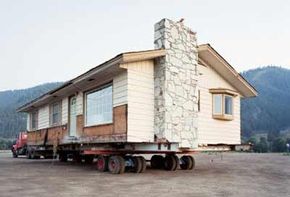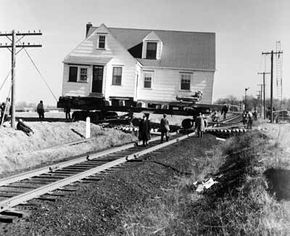Let's say you're house hunting, and you find a house that you absolutely love. It's the perfect size for your family and has amazing features like beautiful woodwork and antique glass. The owner will even let you have this house for the unbelievable price of one dollar. What's the catch? You have to move the house. House moving requires picking the house up from its foundation and setting it down in another spot, sometimes miles away.
This scenario sometimes happens in building booms, when landowners want to build a bigger home on their property. Giving the previous home away saves the owner the cost of demolition. It's also more environmentally friendly to recycle the house instead of sending the many parts to a landfill.
Advertisement
There are other reasons to explore moving a house. If a home is subject to dangers such as flooding, you can relocate it to a safer spot. Homes may be moved because they're in the way of development, such as encroaching shopping centers or highways. Historic homes can be preserved even if the land is used for something else. Moving a home may also be a solution to something as simple as not liking the view or the neighbors.
It's not necessarily a cheap solution to an unlikeable neighbor, though. Before you start digging up your house, you'll need to consider whether house moving makes financial and logistical sense. Will it be cheaper to move a home or build a new one? Are there limits to what can be moved and where it can go? On the next page, we'll take a look at what goes into planning a house move.
Advertisement



